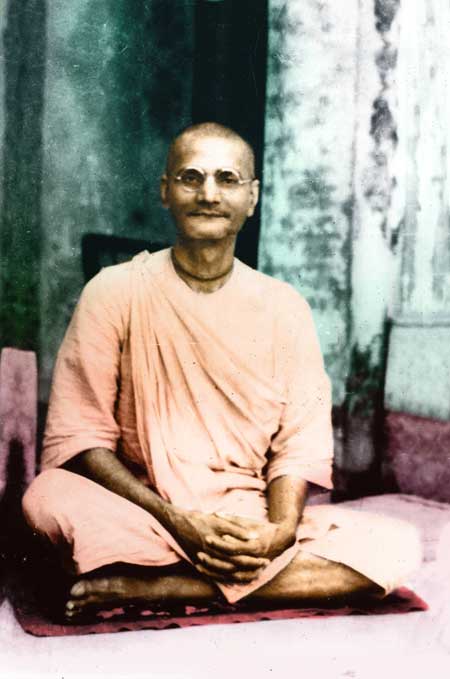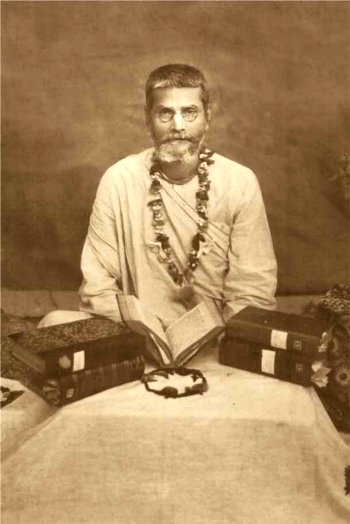Sri Srimad Bhakti Prajnana Kesava
Gosvami Maharaja

Appearance Day
Articles His Bengali Classes mp3
Srila BV Narayan Maharaja's Offerings
MP3 P1 P2 Movies P1 P2
| For the Appearance Day of Sri Srimad Bhakti Prajnana Kesava Gosvami Maharaja - February 1, 2010 |
|
|
|
| Sunday, 31 January 2010 | |||
| [This year, 2010, February 1st is the divine appearance day of Srila Bhakti Prajnana Kesava Gosvami Maharaja. For the spiritual nourishment of our respected readers, we are sending two recent articles from the Rays of the Harmonist.]
The Esoteric Meaning of Annakuta and (please click above titles)
| |||
| Last Updated on Sunday, 31 January 2010 |
| The Esoteric Meaning of Annakuta |
|
|
|
| Tuesday, 14 October 2008 | ||||
|
Special On-line Edition for the disappearance day of
Sri Srimad Bhakti Prajnana Kesava Gosvami Maharaja
|

Pray Srila Gurudeva's Hari Katha Enters Our Hearts
Please Right Click And Save Return to PureBhakti.Tv
Your Donations Help Keep The Lifecast Free
Please Click Here To Make A Donation
20091004am_Srila BP Keshva Maharaja Disp P1.wmv
20091004am_Srila BP Keshva Maharaja Disp P2.wmv
20091004pm_Srila BP Keshva Maharaja Disp P2.wmv
Página PRINCIPAL
OBRAS y AUTORES CLÁSICOS
Agradecimientos
Cuadro General
Disculpen las Molestias
| 2007 | |
| 2008 |
| Conceptos Hinduistas (1428)SC
|
|---|
|
Category:Hindu (mythology) (3256)SC | Category:Hindu mythology (3270)SC | Categoría:Mitología hindú (3288)SC (indice) | Categoría:Mitología hindú (videos) (3289)SC | Conceptos Hinduista (A - G) SK y SC (videos) (3294)SC
Aa-Anc · Aga - Ahy · Ai - Akshay · Akshe - Amshum · Ana - Ancie · Ang - Asvayu · Ata - Az · Baa-Baz · Be-Bhak · Bhal-Bu · C · Daa-Daz · De · Dha-Dry · Du-Dy · E · F · Gaa-Gayu · Ge-Gy · Ha-He · Hi-Hy · I · J · K · Ka - Kam · Kan - Khatu · Ki - Ko · Kr - Ku · L · M · N · O · P · R · S · Saa-San · Sap-Shy · Si-Sy · Ta - Te · U · V · Ve-Vy · Y · Z |
| Conceptos Hinduistas (2919)SK | (2592)SK
|
|---|
|
Aa-Ag · Ah-Am · Ana-Anc · And-Anu · Ap-Ar · As-Ax · Ay-Az · Baa-Baq · Bar-Baz · Be-Bhak · Bhal-Bhy · Bo-Bu · Bra · Brh-Bry · Bu-Bz · Caa-Caq · Car-Cay · Ce-Cha · Che-Chi · Cho-Chu · Ci-Cn · Co-Cy · Daa-Dan · Dar-Day · De · Dha-Dny · Do-Dy · Ea-Eo · Ep-Ez · Faa-Fy · Gaa-Gaq · Gar-Gaz · Ge-Gn · Go · Gra-Gy · Haa-Haq · Har-Haz · He-Hindk · Hindu-Histo · Ho-Hy · Ia-Iq · Ir-Is · It-Iy · Jaa-Jaq · Jar-Jay · Je-Jn · Jo-Jy · Kaa-Kaq · Kar-Kaz · Ke-Kh · Ko · Kr · Ku - Kz · Laa-Laq · Lar-Lay · Le-Ln · Lo-Ly · Maa-Mag · Mah · Mai-Maj · Mak-Maq · Mar-Maz · Mb-Mn · Mo-Mz · Naa-Naq · Nar-Naz · Nb-Nn · No-Nz · Oa-Oz · Paa-Paq · Par-Paz · Pe-Ph · Po-Py · Raa-Raq · Rar-Raz · Re-Rn · Ro-Ry · Saa-Sam · San-Sar · Sas-Sg · Sha-Shy · Sia-Sil · Sim-Sn · So - Sq · Sr - St · Su-Sz · Taa-Taq · Tar-Tay · Te-Tn · To-Ty · Ua-Uq · Ur-Us · Vaa-Vaq · Var-Vaz · Ve · Vi-Vn · Vo-Vy · Waa-Wi · Wo-Wy · Yaa-Yav · Ye-Yiy · Yo-Yu · Zaa-Zy |





No hay comentarios:
Publicar un comentario